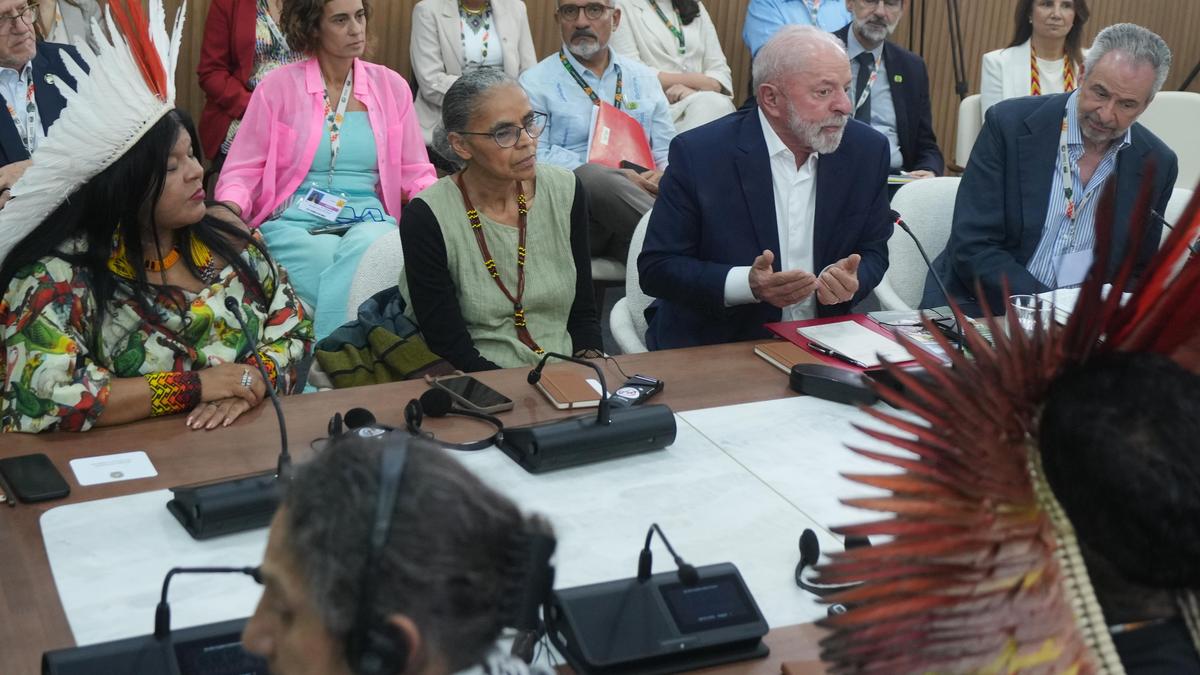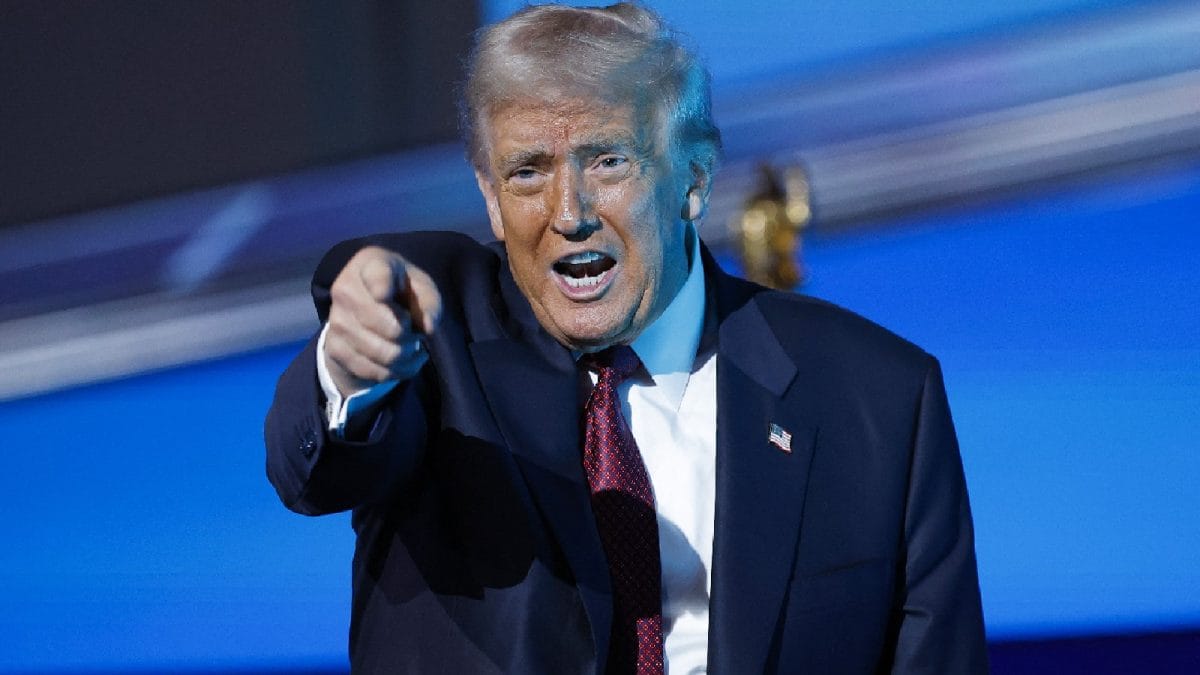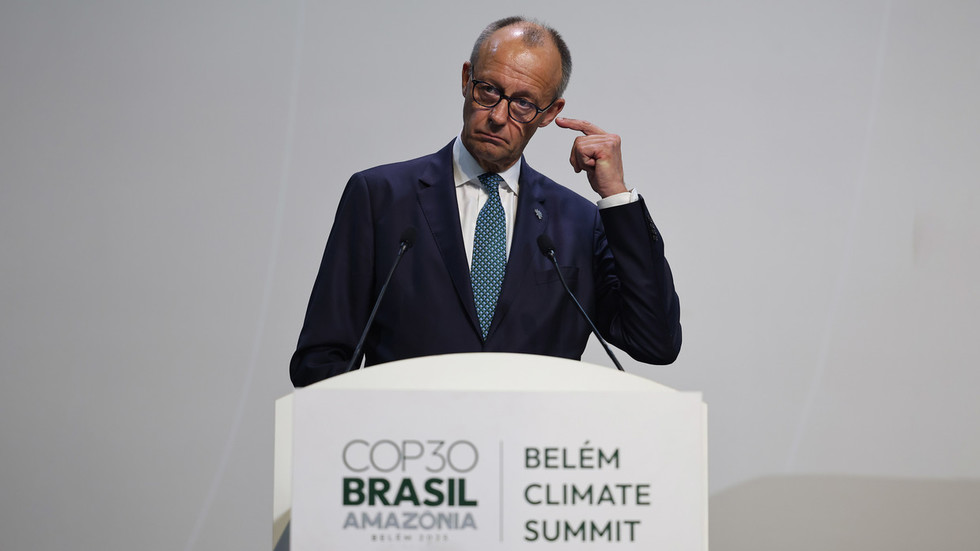“Stop the blah-blah, down with gas in Asia,” chants a group of activists in the hallways of the COP30 venue in Belém, Brazil, while they raise colourful banners and placards condemning oil and gas drilling.
The walls of this sprawling venue hosting the climate talks – once this harbour-city’s airport – are makeshift and porous and these chants bleed through into the more sombre rooms where teams of delegates from a coalition of countries — nearly all of them Asian — cobble together common ground to stone-wall and delay firm action on eschewing fossil fuel use. They are collectively called the ‘Like Minded Developing Countries (LMDC).
Saudi Arabia is a vocal representative of the LMDC that comprises several oil-and-gas producing nations and given the criticality of fossil fuel to their economies, have for years resisted a phase-out plan for fossil fuel. The ‘Like Mindedness’ of these countries is fuzzy.

India, which is not a petro-state, has per-capita incomes far below the oil-producing nations and vocally promotes its massive expansion of renewable energy capacity in the last decade. However, it tags along with this group to press rich, industrialised — largely Western European nations — to deliver on trillions of dollars of climate finance.
The climate talks in Baku, last year, concluded with the rich countries promising to deliver $300 billion annually by 2035, viewed as insufficient to keep the world from heating beyond 2°C and making it resilient to the effects of climate change already under way. The pushback against this — Celsius a position that India has independently articulated multiple times — is that these sums are never available as low cost loans or grants and available largely as part of commercial transactions.
“Grants and concessional resources can lower the cost of capital, facilitating a robust pipeline of investments in developing countries and making these investments more sustainable by lowering the cost of capital,” India said here on behalf of the LMDC on November 15. “Transparency, predictability and reliability of financial flows are central to all climate action. The absence of a multilaterally agreed-upon definition of climate finance and deficiencies in reporting have been a concern to developing countries.”

On the other hand, observers as part of European delegations say that several Western European countries have reached the “maximum” they can deliver in terms of such public finance. “While it is well understood that (developing) countries have their own limitations and planned pathways regarding their dependence on fossil fuel, the sense is that the maximum funds that can be made available as public finance have already been done so. Therefore, it would require private finance as well as commitments from more countries to contain emissions and help adaptation,” said Jen Mattias Clausen, the European Union Program Director of Denmark-based think tank Concito who has been part of COP negotiations for over a decade.
Even a plan to deliver on the $300 billion was inchoate. “This COP must provide clarity on the finance pathway — as India has consistently demanded — not just how we move from $300 billion to $1.3 trillion, but how we first reach $300 billion in a credible, predictable way. Above all, we need structural fixes: lowering the cost of capital, restoring trust, and ensuring that climate finance genuinely leverages investment,” Arunabha Ghosh, CEO, Council on Energy Environment and Water, and Special Envoy to COP30 representing South Asia, said in a statement.
This fundamental logjam guides attempts by the President of COP negotiations, at present Andre Lago of Brazil, to opt for a process whereby all countries – nearly all of them who are part of about 19 negotiating blocs – feel heard, rather than crafting an ambitious decisive deal that would ratchet climate action. This, when COP30 in the run-up to the two-week jamboree was pitched as a “..COP of implementation”.

As things stand on Wednesday (November 19, 2025), the Presidency has asked countries to evolve consensus on four of the most pressing climate concerns — finance, trade, transparency and the fact that countries’ emissions-cutting plans — known as nationally determined contributions, or NDCs, are inadequate to limit temperature rises to 1.5°C, the goal of the Paris agreement.
This comes even as Brazilian President Lula Da Silva is expected to make a statement later in the day articulating a move away from “fossil fuel dependency,” and a group of 80 countries — including Asian and European countries — vociferously demanding a road map to end fossil fuel use.
Other experts say the COP process is further weakened by the absence of those in government who take financial decisions. “Climate finance commitments made at COP often fail to turn into real money because those who control national finances — the finance ministries and finance ministers — don’t negotiate at COP. Instead, talks are led by foreign or environment ministries with limited influence over budgets. The United Nations Framework Convention on Climate Change (UNFCCC) cannot deliver climate finance; at best, it can only signal direction to governments and markets,” Chandra Bhushan, public policy expert, and the founder-CEO of International Forum for Environment, Sustainability & Technology (iFOREST), told The Hindu.
Published – November 20, 2025 02:35 am IST








